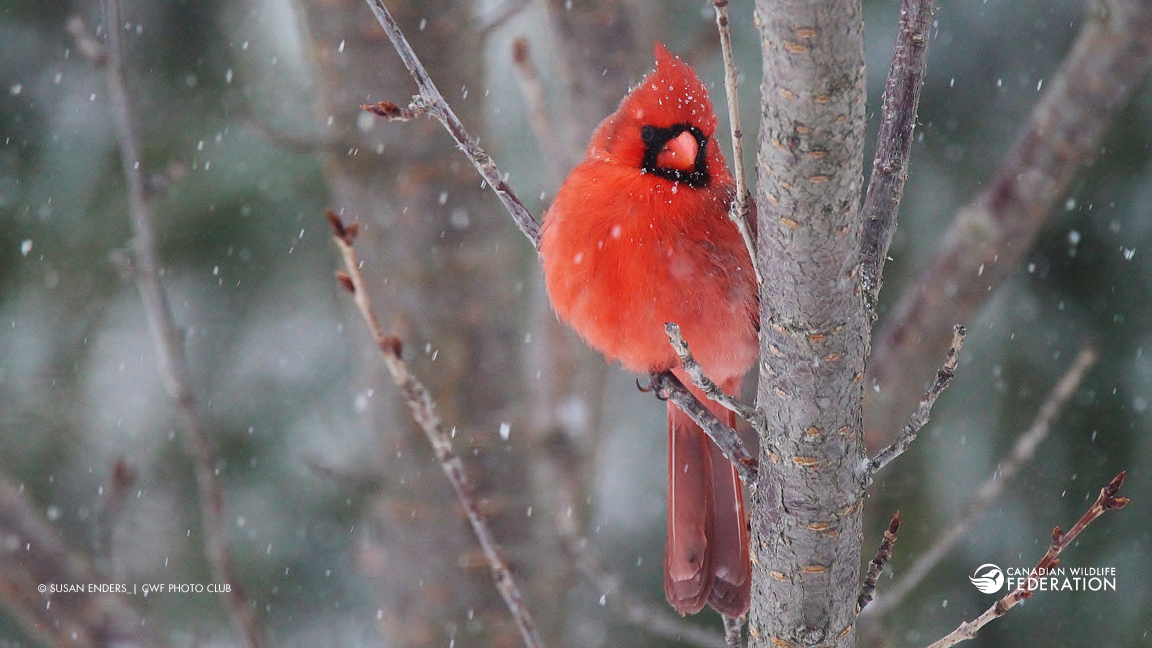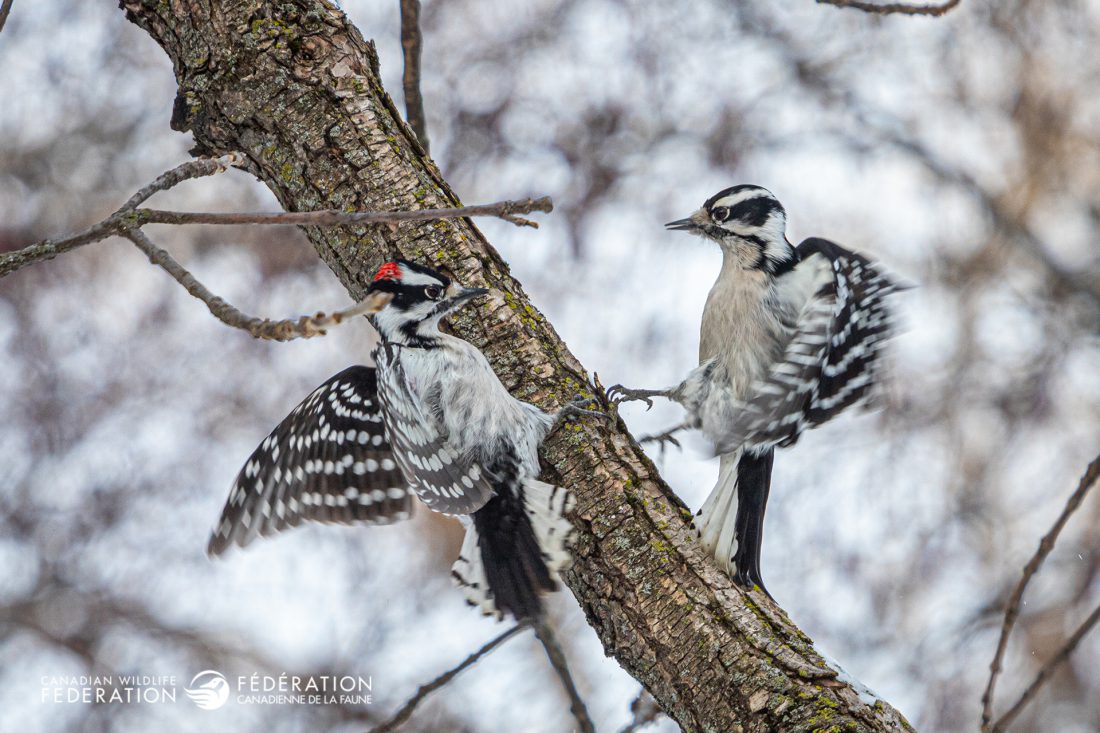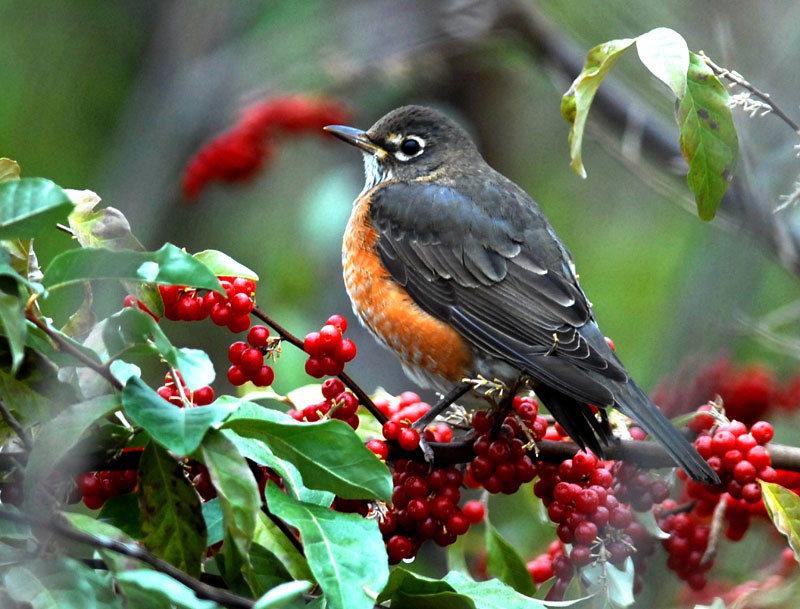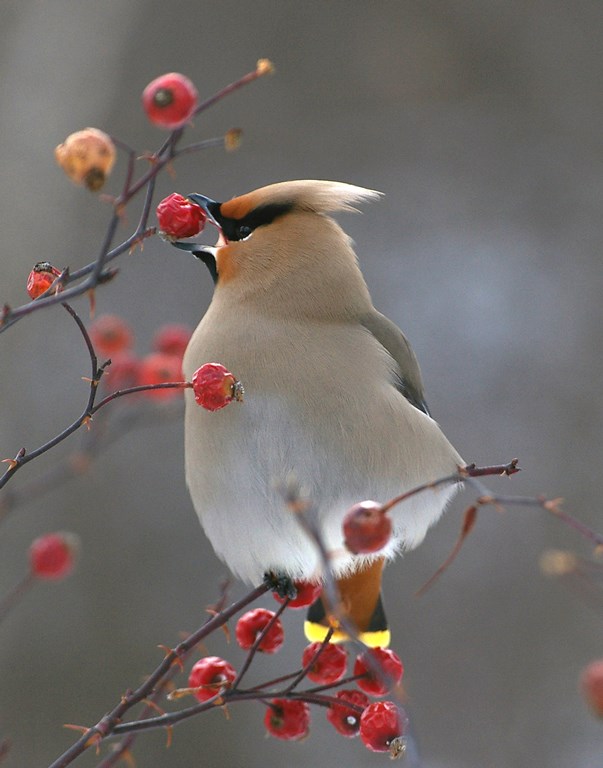If the winter is feeling rather bleak and long, just look to your backyard for some life!
We’ve got five brightly coloured birds that’ll liven up your backyard and how to attract each and every one of them to your space over the winter months. See? You don’t have to travel far to enjoy birdwatching. You can watch them from the comfort of your own home!
Bright Bird #1: Blue Jay

The only blue bird on the list, the Blue Jay may be a common bird to see here in Canada, but that doesn’t make them any less glorious. These stunning birds will grace your garden if you provide tray or hopper feeders filled to the brim with peanuts, sunflower seeds, suet, cracked corn and millet. You get bonus points if you put fruit out for them too!
Don’t be surprised if you notice your Blue Jays popping by the feeder and flitting away soon after. They often stash their goods under trees or shrubs to eat a little later. They’re even built to stash and dash! They can carry food in their gulcar pouch – a little spot in their throats – where they can pop nuts and seeds. But they don’t stop there. They’ll also stash a peanut in their mouth and one more in their beak before they fly away to hide the lot.
Bright Bird #2: Northern Cardinal

The Northern Cardinal is a stunning vivid red bird. At least the males are. You see, females are quite a bit duller in colour. Don’t get us wrong, they’re still gorgeous with pale brown plumage and reddish orange colouring on their wings, tail and bill. But the showstoppers are the males. Males are blazing bright red all over – minus their black faces.
It certainly wouldn’t be hard to pick them out from the other birds at your feeder. Cardinals will often chow down alongside other species like American Goldfinch, Tufted Titmice, Dark-eyed Juncos and all kinds of sparrows. They like the same kinds of seeds: black oil sunflower seeds, hulled sunflower seeds, millet, milo and more!
If you’d like to attract these birds to your garden all year-round, invest in some fruit-bearing and seed-bearing plants like sumac, dogwood, sedges and different kinds of grasses.
Bright Bird #3: Downy Woodpecker

Downy Woodpeckers are vivid white and black birds with a touch of red on their crown. These gorgeous birds will flock to your suet feeder along with nuthatches and chickadees, but they’ll also happily consume the black oil sunflower seeds, millet and peanuts you put out for them too. While they spend plenty of time at feeders, they spend even more time in wooded areas, hopping up and down the length of trees, looking for insects to eat! They fish out insects living under tree bark and in tiny cracks and crevices along the trunk of the tree with their amazingly long tongues. Their tongues can be up to 15 centimetres long! How in the world can a Downy Woodpecker carry around 15 centimetres of tongue in its mouth? Isn’t that a mouthful? Well, yes, it would be! And so the Downy Woodpecker stores its tongue coiled up inside its skull.
Bright Bird #4: American Robin

At this point I think we all associate the American Robin with the start of spring. Winter doesn’t seem that much longer when these lovely birds arrive on our lawns. But that doesn’t mean it’s over. In fact, many southern provinces have sighted American Robins in the heart of winter over the past 10 years. Even those that flock to more balmy climes to get away from the cold often return in early March. The first robins to grace our gardens are usually males; a week or so later the females will arrive. If you’ve got fruit-bearing trees and shrubs in your backyard, you’ll likely spot quite a few robins in your backyard! That said, they also like sunflower seeds, peanuts and suet.
Bright Bird #5: Cedar Waxwings

Cedar Waxwings love fruit above all things. Of course, they got their name for how much they love eating cedar berries in the winter months, but don’t be mistaken, they’re not at all picky. Practically any fruit will do! Cedar Waxwings will happily munch on dogwood, serviceberry, juniper, mountain ash, crabapple and even winterberry.
How they eat berries is nearly as interesting as how many berries they can consume! Cedar Waxwings will either land on the branch of a berry-producing tree and gulp the entire berry whole or it’ll grab berries mid-flight by hovering below a bunch of berries!
If you see a Cedar Waxwing with orange tail tips, you can thank their diet for that orange colouring! They’re usually yellow! But after a healthy helping of berries from an introduced honeysuckle species, their yellow tips turn orange.
Berries are so important to these beautiful birds, male Cedar Waxwings will woo potential mates with them! Males will present a small fruit (like a berry) to a female and the female will grab it in its bill, flit away for a brief moment and return the berry back to the male. They’ll go back and forth like this for a while before the female finally eats the berry. Chivalry isn’t dead, after all!






1 comment
I loved your article on colourful winter birds. But ot should be 6 birds! Don’t leave out the gorgeous pine grosbeaks. Blue jay-sized and a stunning dusty rose colour in the males, faded rose in the ladies. So welcome here at my feeders in Alberta.